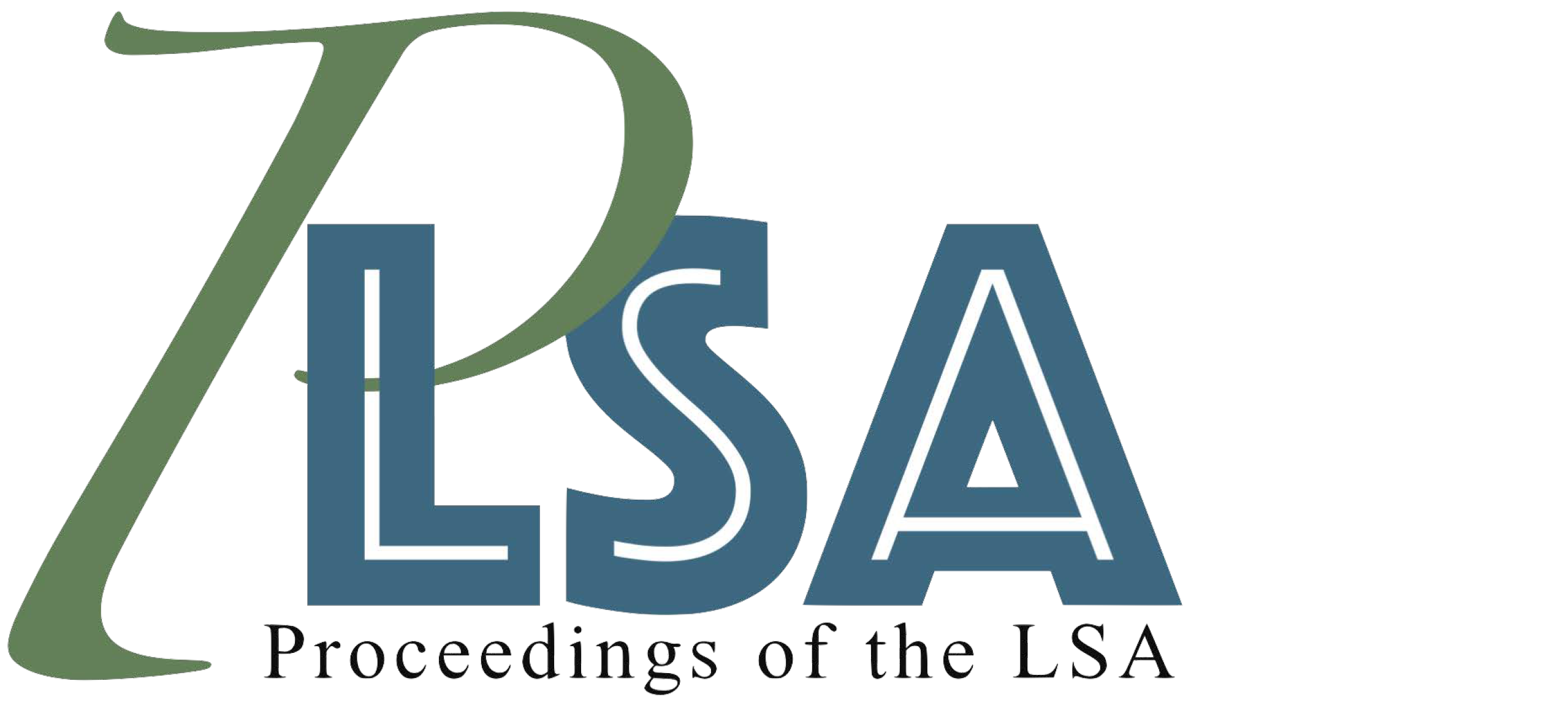Interpretation of verbal ellipsis in monolinguals and heritage speakers
DOI:
https://doi.org/10.3765/plsa.v10i1.5953Keywords:
ambiguity resolution, verbal ellipsis, heritage speakers, TurkishAbstract
This study investigates how monolingual English and Turkish speakers, as well as English-dominant Turkish heritage speakers (HSs) interpret strict/sloppy ambiguity in verbal ellipsis structures (e.g., John defended his friend, and Noah did too). Prior work shows that HSs often diverge from monolinguals in interpreting null subjects (Laleko & Polinsky, 2017; Sorace & Filiaci, 2006), yet it is unclear whether this extends to null constructions beyond subject pro-drop. To test this, we examined the interpretations of baseline English and baseline Turkish speakers for ambiguous verbal ellipsis sentences, compared to Turkish HSs, who completed picture choosing tasks in English (Exp. 1) and Turkish (Exp. 2). Baseline English speakers preferred the strict reading, whereas baseline Turkish speakers preferred the sloppy reading in elided sentences. HSs, however, showed a strict reading preference in both English and Turkish, diverging from Turkish monolinguals and aligning more with their dominant language, English. Further analyses revealed individual differences in the interpretation of verbal ellipsis among HSs and Turkish baseline speakers, with HSs showing this variation in both of their languages. These findings offer new evidence of HSs’ divergence from baseline speakers in the domain of interpretation of null elements beyond null subjects and highlight potential role of language experience.
Downloads
Published
Issue
Section
License
Copyright (c) 2025 Esra Eldem Tunc, Zuzanna Fuchs, Elsi Kaiser

This work is licensed under a Creative Commons Attribution 4.0 International License.
Published by the LSA with permission of the author(s) under a CC BY 4.0 license.
